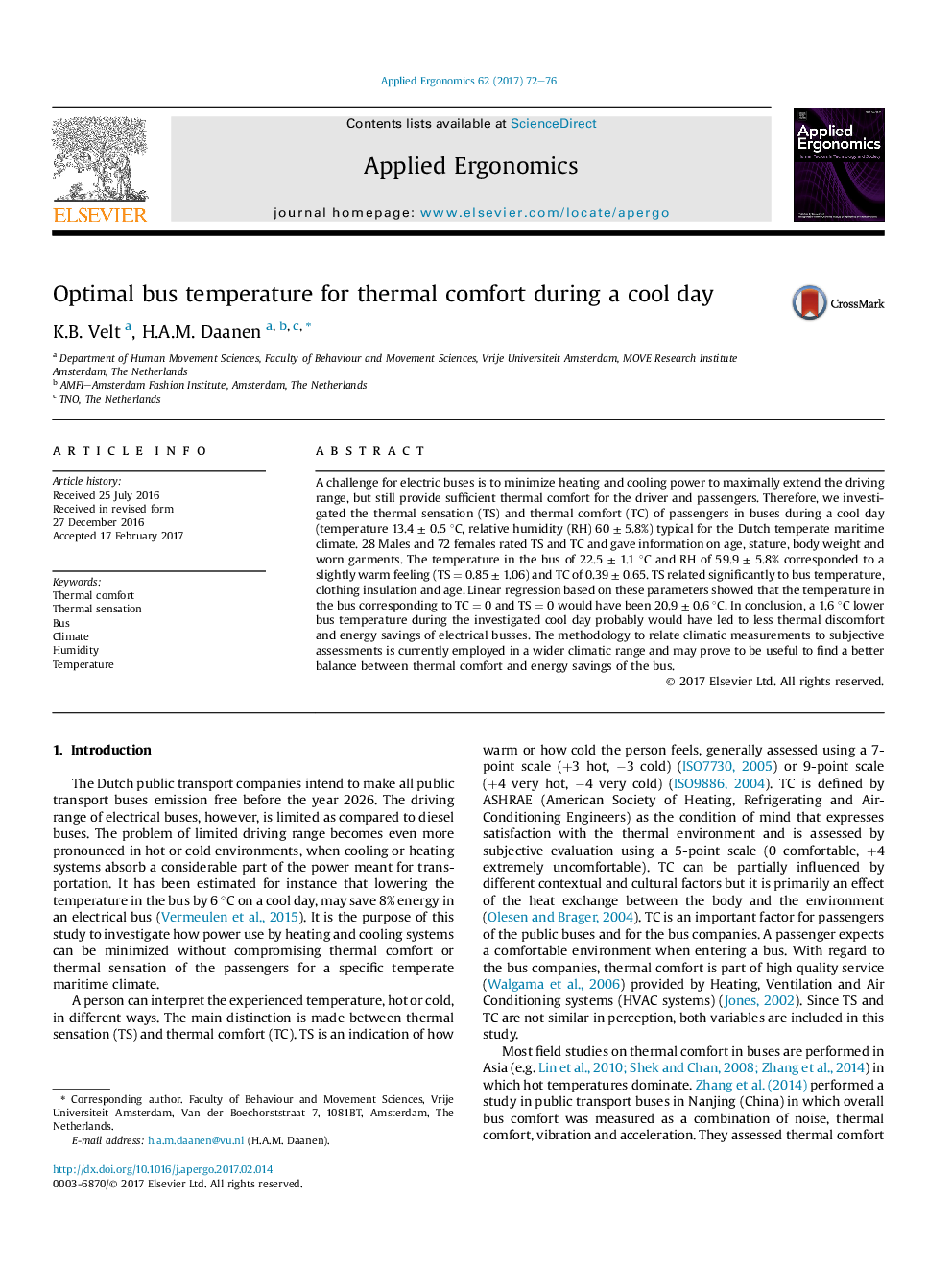| Article ID | Journal | Published Year | Pages | File Type |
|---|---|---|---|---|
| 4972041 | Applied Ergonomics | 2017 | 5 Pages |
Abstract
A challenge for electric buses is to minimize heating and cooling power to maximally extend the driving range, but still provide sufficient thermal comfort for the driver and passengers. Therefore, we investigated the thermal sensation (TS) and thermal comfort (TC) of passengers in buses during a cool day (temperature 13.4 ± 0.5 °C, relative humidity (RH) 60 ± 5.8%) typical for the Dutch temperate maritime climate. 28 Males and 72 females rated TS and TC and gave information on age, stature, body weight and worn garments. The temperature in the bus of 22.5 ± 1.1 °C and RH of 59.9 ± 5.8% corresponded to a slightly warm feeling (TS = 0.85 ± 1.06) and TC of 0.39 ± 0.65. TS related significantly to bus temperature, clothing insulation and age. Linear regression based on these parameters showed that the temperature in the bus corresponding to TC = 0 and TS = 0 would have been 20.9 ± 0.6 °C. In conclusion, a 1.6 °C lower bus temperature during the investigated cool day probably would have led to less thermal discomfort and energy savings of electrical busses. The methodology to relate climatic measurements to subjective assessments is currently employed in a wider climatic range and may prove to be useful to find a better balance between thermal comfort and energy savings of the bus.
Related Topics
Physical Sciences and Engineering
Computer Science
Human-Computer Interaction
Authors
K.B. Velt, H.A.M. Daanen,
